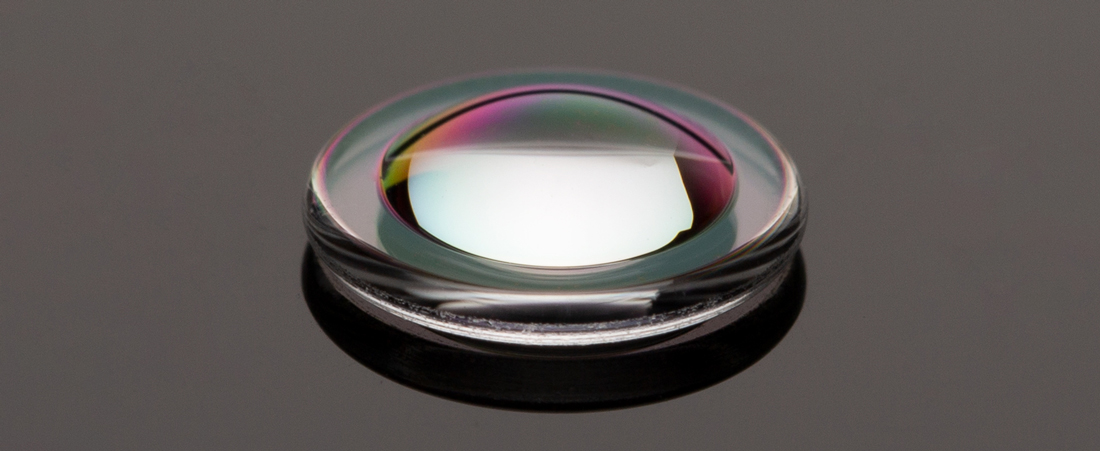A lens is an optical element made of transparent substances (such as glass, crystal, etc.). The lens is a refractor whose refraction surface is a transparent body with two spherical surfaces (part of the spherical surface), or a spherical surface (part of the spherical surface) and a plane. It has both real and virtual images. Lenses can generally be divided into two categories: convex lenses and concave lenses. The central part thicker than the edge part is called a convex lens, and there are three types of biconvex, plano-convex, and concave;

Classification of lenses:
Convex lens has the function of converging light, so it is also called converging lens; positive lens (can be used for hyperopia and reading glasses). Such lenses can be divided into:
a. Double concave lens; is a lens on both sides;
b. Plano-concave lens; is a lens with one side concave and one side flat;
c. Convex and concave lens; a lens with one side convex and one side concave.
Thin Lens - A lens with a large central portion compared to the radii of curvature of its two sides. In the early days, the camera was only equipped with a lens with a convex lens, so it was called a single lens. With the increasing development of science and technology, modern lenses have several convex and concave lenses of different forms and functions to form a converging lens, called a compound lens. The concave lens in the compound lens functions to correct various aberrations.
Optical glass has high transparency, purity, colorless, uniform texture, and good refractive power, so it is the main raw material for lens production. Due to the difference in chemical composition and refractive index, optical glasses are:
1. Flint glass - lead oxide is added to the glass composition to increase the refractive index (1.8804);
2. Crown glass - made by adding sodium oxide and calcium oxide to the glass composition to reduce its refractive index (the refractive index of barium crown glass is 1.7055);
3. Lanthanum crown glass - a variety discovered in recent years, it has the excellent characteristics of high refractive index and low dispersion rate, which provides conditions for creating large-diameter advanced lenses.

Lens imaging principle
A glass or plastic component used in lamps can change the direction of light or control the distribution of light.
The lens is the most basic optical element that constitutes the optical system of the microscope. The objective lens, eyepiece and condenser are all composed of single or multiple lenses. According to their different shapes, they can be divided into two categories: convex lenses (positive lenses) and concave lenses (negative lenses).
When a beam of rays parallel to the main optical axis passes through the convex lens and then intersects at a point, this point is called the focal point, and the plane passing through the focal point and perpendicular to the optical axis is called the focal plane. There are two focal points, the focus in the object space is called the object focus, and the focal plane there is called the object focal plane; otherwise, the focus in the image space is called the image focus, and the focal plane there is called the focal plane. After passing through the concave lens, the light from the focal plane of the image square forms an upright virtual image, while the convex lens forms an inverted real image. Real images can appear on the screen, but virtual images cannot.
Convex lens imaging law:
Object distance (u) Image distance (v) Inversion, size, virtual and real applications
u>2f F inverted zoom out, reality, camera
u=2f v=2f Inversion, equal size, real image, feature: size demarcation point
f<u2f Inverted Magnification, real image, projector, slide projector
u=f v=∞ No imaging, features: boundary between virtual and real
uv upright magnification, virtual image, magnifying glass
optical lens

We are looking forward to establishing long-term cooperative relations with customers around the world on the basis of trust and mutual benefit. Please feel free to contact us for further information. We sincerely welcome you to our factory.
Copyright © Jiangxi High-Resolution Optoelectronic Co., Ltd. All Rights Reserved | Sitemap